Kyrgyz Dishes: Basic Overview
Common Ingredients
Common Cooking Methods
Courses
Meals
Key Taste
Eating Etiquette
Meal Presentation
Culinary Festivals
Influence and Fusion
Popular Types of Kyrgyz Dishes
-
Dumplings
These specialties include dough filled with meat, not ideal for vegan and vegetarian eaters.
Steaming, boiling, or frying are common methods.
-
Cakes and Pastries
They are available in sweet and savory tastes with fillings like meat, fruits, cheese, or no filling.
Cakes and pastries are also ideal snacks or desserts in the nation.
-
Bread and Doughs
Bread is an essential part of Kyrgyz cuisine with various flatbread or leavened ones.
They are served with most meals.
-
Noodle Soups
They feature noodles and hearty broth, complemented by meat and veggies.
The noodle is not suitable for gluten-free diets.
-
Dry Noodle Dishes
They are similar to noodle soup but with less broth.
Beshbarmak is a famous one and is eaten by hand.
-
Rice Dishes
Rice is a central component cooked with meat, vegetables, and spices. -
Charcuterie and Cheese boards
Reflecting the nomadic traditions, these delights are dried or cured meat-based sausage.
Kyrgyz Dishes: Signature Culinary Delights
-
Most Popular Dishes
These are famous delicacies enjoyed by locals and tourists across the country.
They are also essential food for gatherings here.
-
National Dishes
It is a national identity of Kyrgyz cuisine. -
Traditional Dishes
These recipes have been made and passed down through many generations.
Many of them are linked to specific cultural practices in Kyrgyzstan.
-
Street Food
They are small-bited foods that can be found are local street vendors.
Baking or grilling are popular cooking methods for Kyrgyz street food.
-
Exotic Dishes
They use unfamiliar ingredients or unique dishes that can’t be found outside Central Asia. -
Fusion Dishes
These dishes mix the traditional culinary practices of Kyrgyzstan with other cuisines, such as neighboring countries.
Kyrgyz dishes are culinary creations of Kyrgyzstan’s population, with many dishes often depicting the people’s nomadic way of life.
Commonly, the locals in Kyrgyzstan rely heavily on lamb, horse, and cow for meat. Additionally, many dairy products play a pivotal role in Kyrgyz cooking.
Speaking of cooking, Kyrgyz dishes tend to aim for methods that prolong the food for a long time, like boiling or simmering. Though mutton and beef are popular choices of meat, not many are able to afford it in today’s Kyrgyzstan.
Often, dishes possess a savory profile thanks to all sorts of local spices. Furthermore, the country has many nationalities that share the land in places like Osh, Karakol, Jalal-Abad, and Bishkek.
To add to that, Kyrgyz cooking is also affected by other cuisines like Dungan, Uzbek, Turkish, and Uyghur. However, the streets and villages of Kyrgyzstan are where people will mostly find common Kyrgyz specialties.
Surprisingly, adding oil and sheep fat into dishes during the cooking process is considered a healthy and tasty act by the locals.
Make sure to keep scrolling as I am going to unravel the history and cultural aspects of Kyrgyz dishes, along with the eating habits of the people.
Then, you should not miss some dining etiquette of people in Kyrgyzstan and inquiries relating to the topic of Kyrgyz dishes.
35 Most Popular Kyrgyz Dishes with Filters
#1
in Kyrgyzstan
#2
in Kyrgyzstan
#3
in Kyrgyzstan
#4
in Kyrgyzstan
#5
in Kyrgyzstan
#6
in Kyrgyzstan
#7
in Kyrgyzstan
#8
in Kyrgyzstan
#9
in Kyrgyzstan
#10
in Kyrgyzstan
#11
in Kyrgyzstan
#12
in Kyrgyzstan
#13
in Kyrgyzstan
#14
in Kyrgyzstan
#15
in Kyrgyzstan
#16
in Kyrgyzstan
#17
in Kyrgyzstan
#18
in Kyrgyzstan
#19
in Kyrgyzstan
#20
in Kyrgyzstan
#21
in Kyrgyzstan
#22
in Kyrgyzstan
#23
in Kyrgyzstan
#24
in Kyrgyzstan
#25
in Kyrgyzstan
#26
in Kyrgyzstan
#27
in Kyrgyzstan
#28
in Kyrgyzstan
#29
in Kyrgyzstan
#30
in Kyrgyzstan
#31
in Kyrgyzstan
#32
in Kyrgyzstan
#33
in Kyrgyzstan
#34
in Kyrgyzstan
#35
in Kyrgyzstan
Kyrgyz Dish Images
What Are The Historical and Cultural Influences on Kyrgyz Dishes?
When speaking of historical and cultural aspects that affect Kyrgyz dishes, these are the features that you should take note of:
Nomadic Traditions
The Kyrgyz people were historically nomadic, which explains why their diet was primarily based on the need for long-term food preservation and portability. Thus, animal meat and dairy are top options.
Silk Road
As a crossroads on the Silk Road, Kyrgyzstan was exposed to a variety of cultural influences. This brought elements from Roman, Greek, Turkish, Persian, Arabian, Indian, Chinese, and Russian cuisines, which mingled with Central Asian culinary traditions.
Influences from Neighboring Countries and Peoples
The cuisine has been shaped by its neighbors and the various ethnic groups within Kyrgyzstan. This has introduced a variety of dishes and cooking techniques to Kyrgyz cuisine.
Adaptation to Local Environment
The harsh climatic conditions and the mountainous terrain of Kyrgyzstan have also shaped the cuisine, with an emphasis on hearty, high-energy foods that provide sustenance in a challenging environment.
Religious Influences
As a predominantly Muslim country, Islamic dietary laws have influenced Kyrgyz cuisine, particularly in the types of meat consumed and the avoidance of pork by many Kyrgyz Muslims.
Modern Influences
In recent years, globalization and urbanization have introduced international cuisines and new ingredients, leading to a more diverse culinary scene in Kyrgyzstan, especially in cities.
Once you’ve wrapped your mind around these ideas that contribute to the uniqueness of Kyrgyz culinary creations, uncover some national options of this country.
What Are the Typical Eating Habits and Meal Times in Kyrgyzstan?
Judging from the nomadic lifestyle of Kyrgyz people, the eating time and habits are also worth discussing to understand how dishes are eaten:
Meal Frequency
The Kyrgyz population often has four or five times a day. However, among these, usually only one is a large meal.
Breakfast
Usually between 7:30 and 8:30 AM, people in Kyrgyzstan tend to eat options like curd, bread, honey, cheese, cucumber, or pickled cabbage.
Lunch
Last, from 1:00 PM – 2:00 PM, lunch in Kyrgyzstan revolves around bread, soup, mutton, and pilaf, which often go with soft drinks and tea.
Dinner
In Kyrgyzstan, 6:30 PM to 8:00 PM is when people savor boiled meat or stew with pilaf. Alternatively, locals opt for a lighter meal by making use of leftovers from lunch.
Snacks and Small Meals
Snacks are a common practice in a Kyrgyz meal, with people often combining tea, bread, and various condiments (jam, butter, salads, or clotted cream) to enjoy.
Weekend and Special Meals
Sundays are considered a special time in Kyrgyzstan, explaining why meals tend to be more elaborate and larger in size.
Tea Culture
To the Kyrgyz population, tea is a crucial part of enjoying lunch and dinner. Usually, the tea is accompanied by bread and various dairy options.
Don’t just stop at knowing about Kyrgyz dining habits, as learning some proper etiquette of the locals makes it easier for you to fully immerse into the country’s culture.
What Are the Eating Etiquette of Kyrgyzstan?
To fully enjoy the Kyrgyzstan culture, it’s essential for you to learn about some of the common etiquette:
Serving
Meals are often served on a white cloth called “dostorkon”, which can be placed on a table or the floor.
Sitting Etiquette
For a meal with many, people often sit with their feet to the side or away from the dostorkon to pay respect to the eating area.
Eating
The most important rule when eating in Kyrgyzstan is to use only your right hand to handle food. Once you’ve finished a meal, you should conclude with a gesture of bringing hands to the face, as if washing it, and saying “omin” to express gratitude.
Respecting Bread
Bread is a valuable item in Kyrgyz cuisine, explaining why you should never place it on the ground or upside down. Plus, people don’t often throw away bread, while leftovers are saved for animal consumption.
Host’s Invitation
Guests should not start eating until invited by the host and should let the eldest or honored guests try the food first.
Food Etiquette
It’s considered a sin to leave food untouched, eat while standing, or treat any food scornfully.
Seating Arrangements
Special seating is arranged for guests, with the eldest or honored guest seated at the head of the table or the ‘tyor’ (seat farthest from the door). Younger people or hosts often act as servers.
Visiting Gifts
Bringing sweets or souvenirs for children is customary when visiting someone’s house in Kyrgyzstan.
Aside from these usual etiquettes, you can continue to expand your knowledge about Kyrgyz dishes through some common inquiries about them.



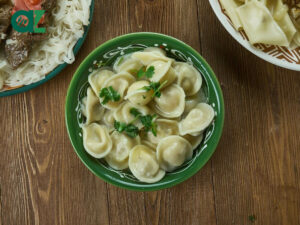
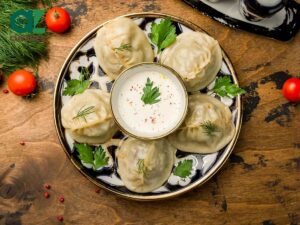

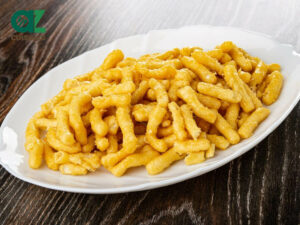
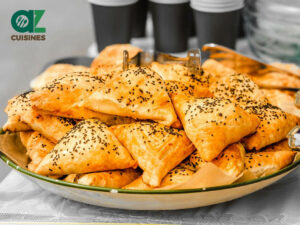




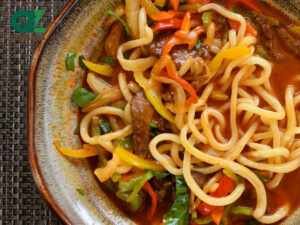
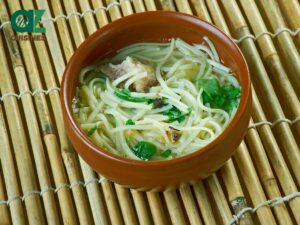
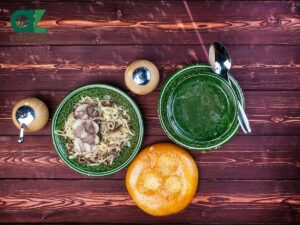
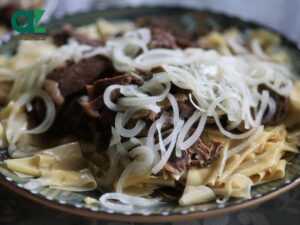
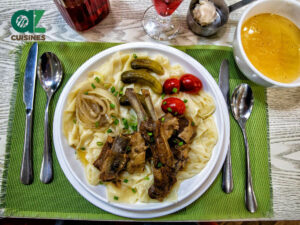
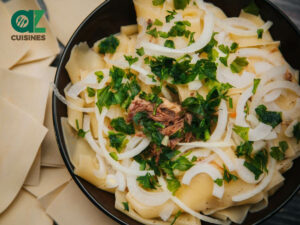

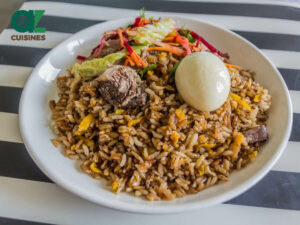
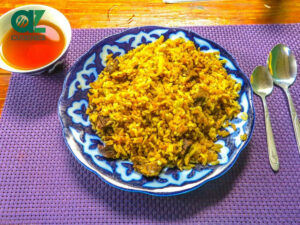
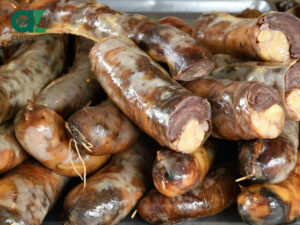

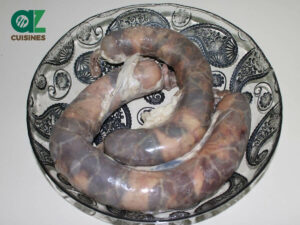
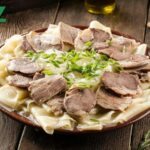
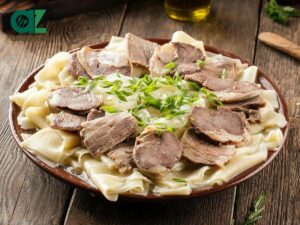

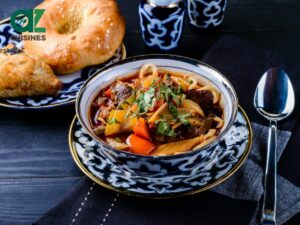

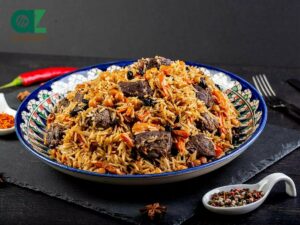

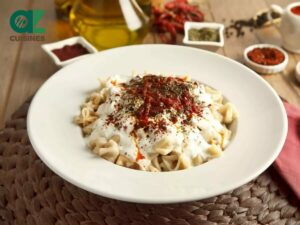
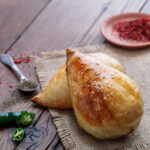
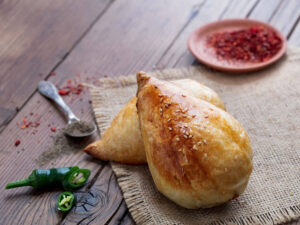

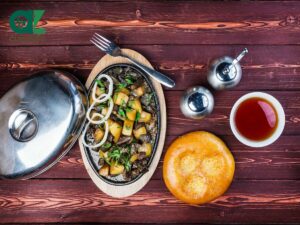


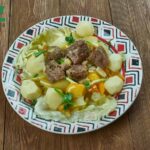
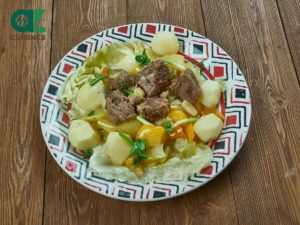
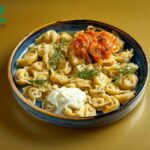
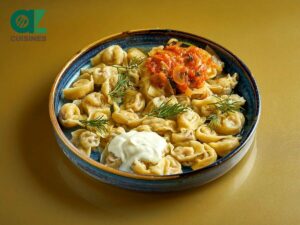
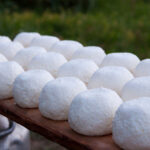
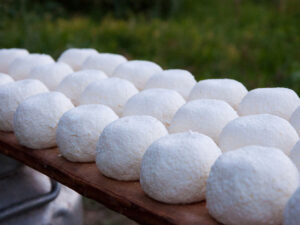

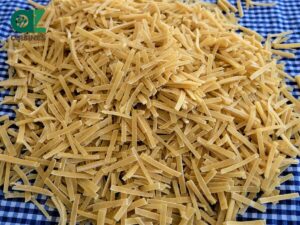
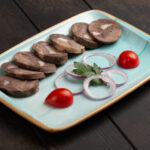

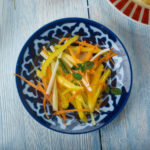
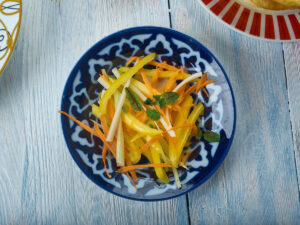
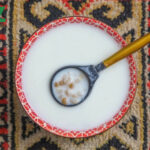
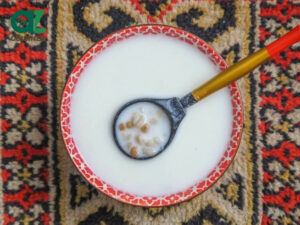

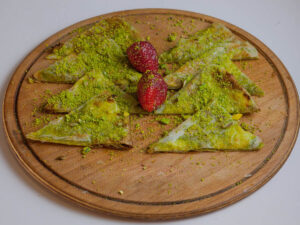
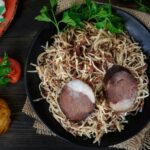

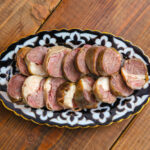
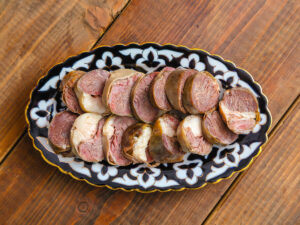
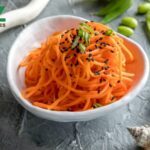
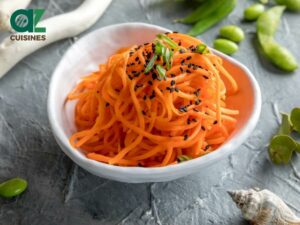

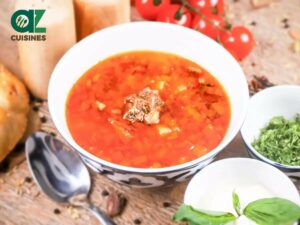

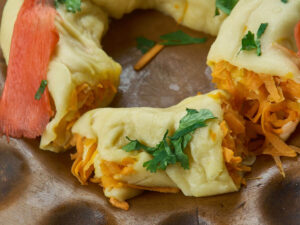

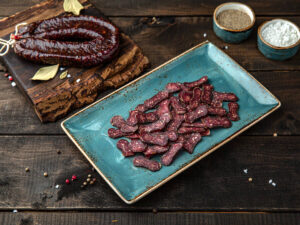

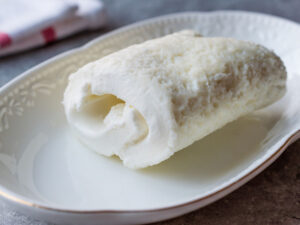



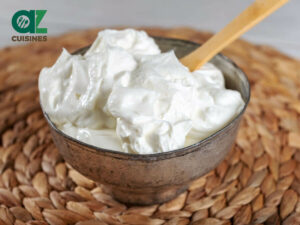

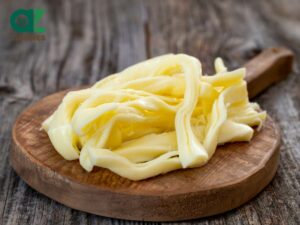
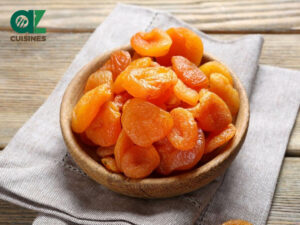
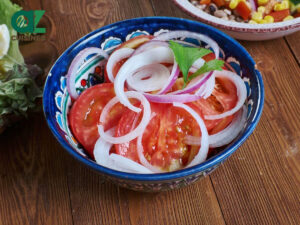




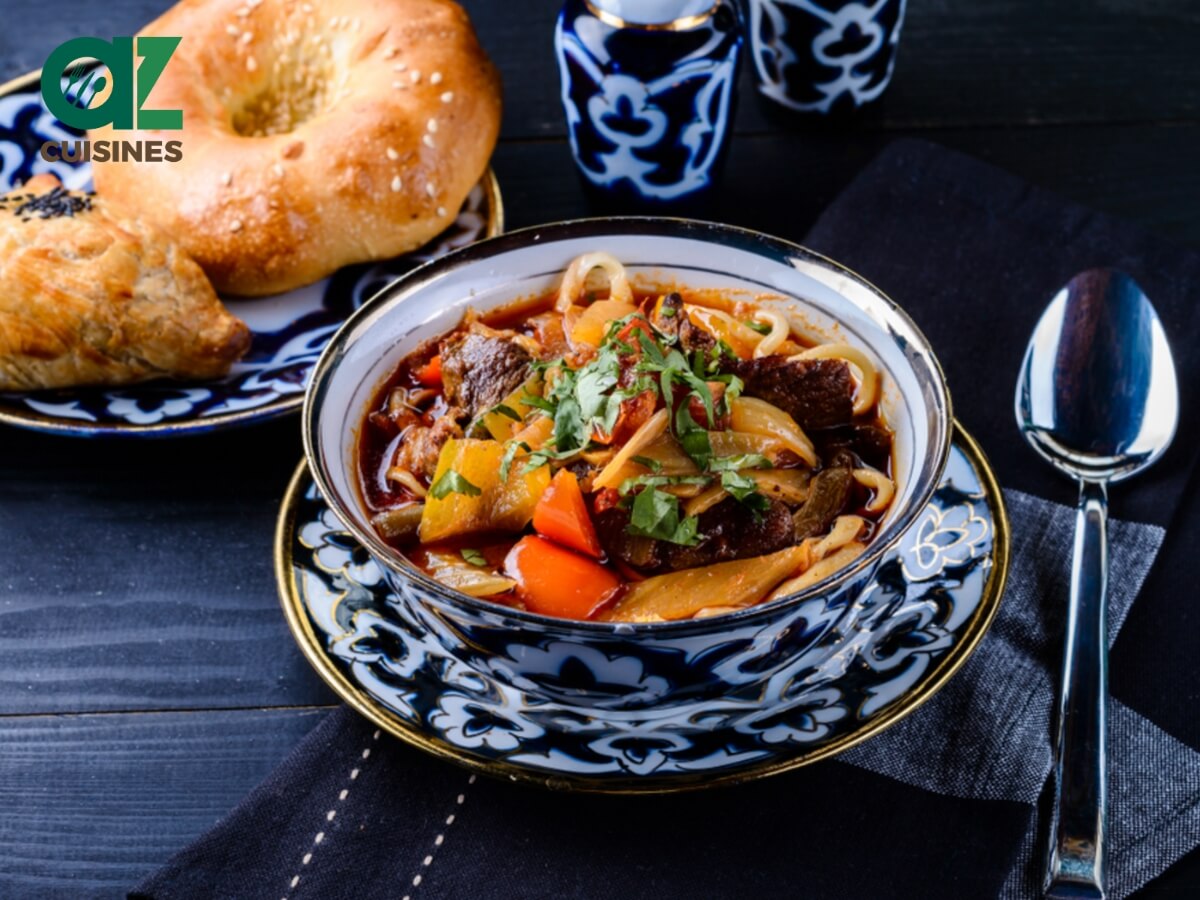
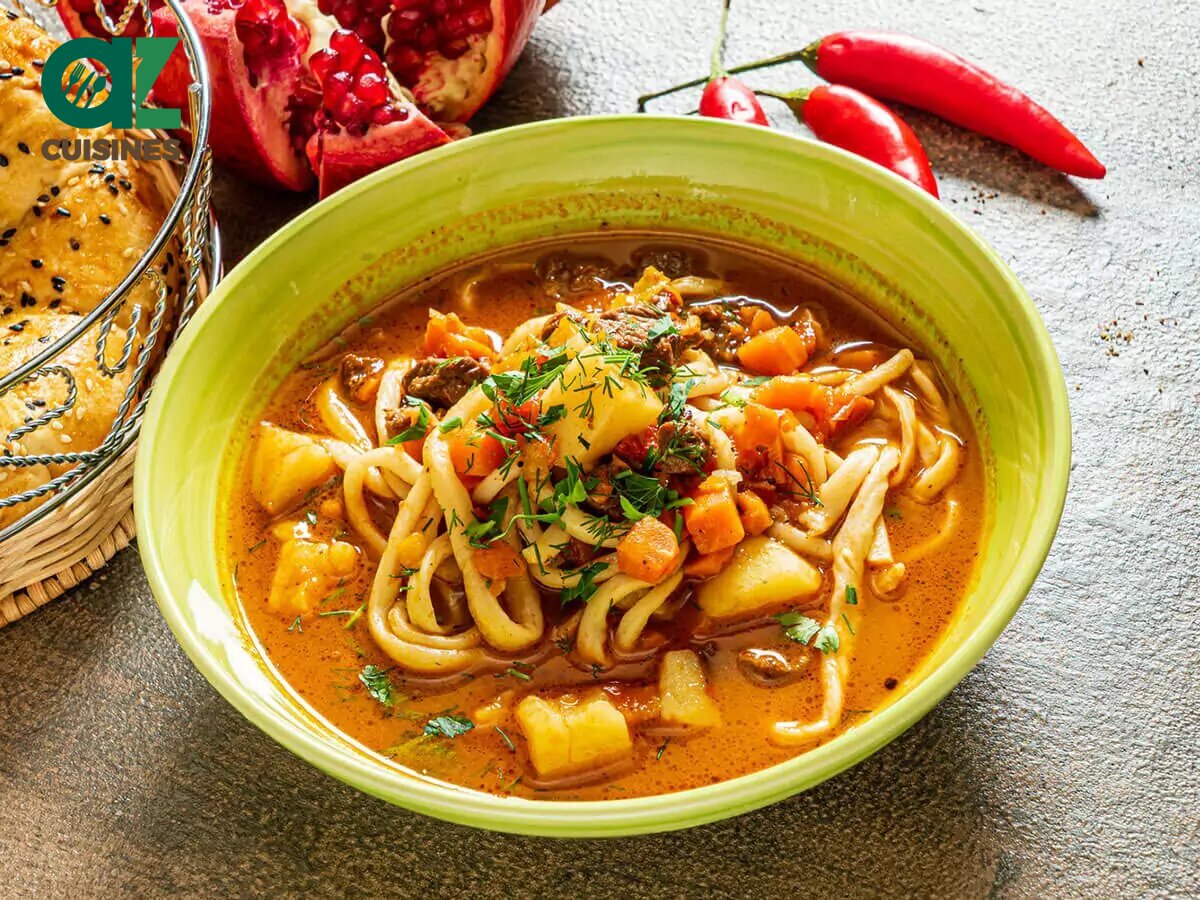
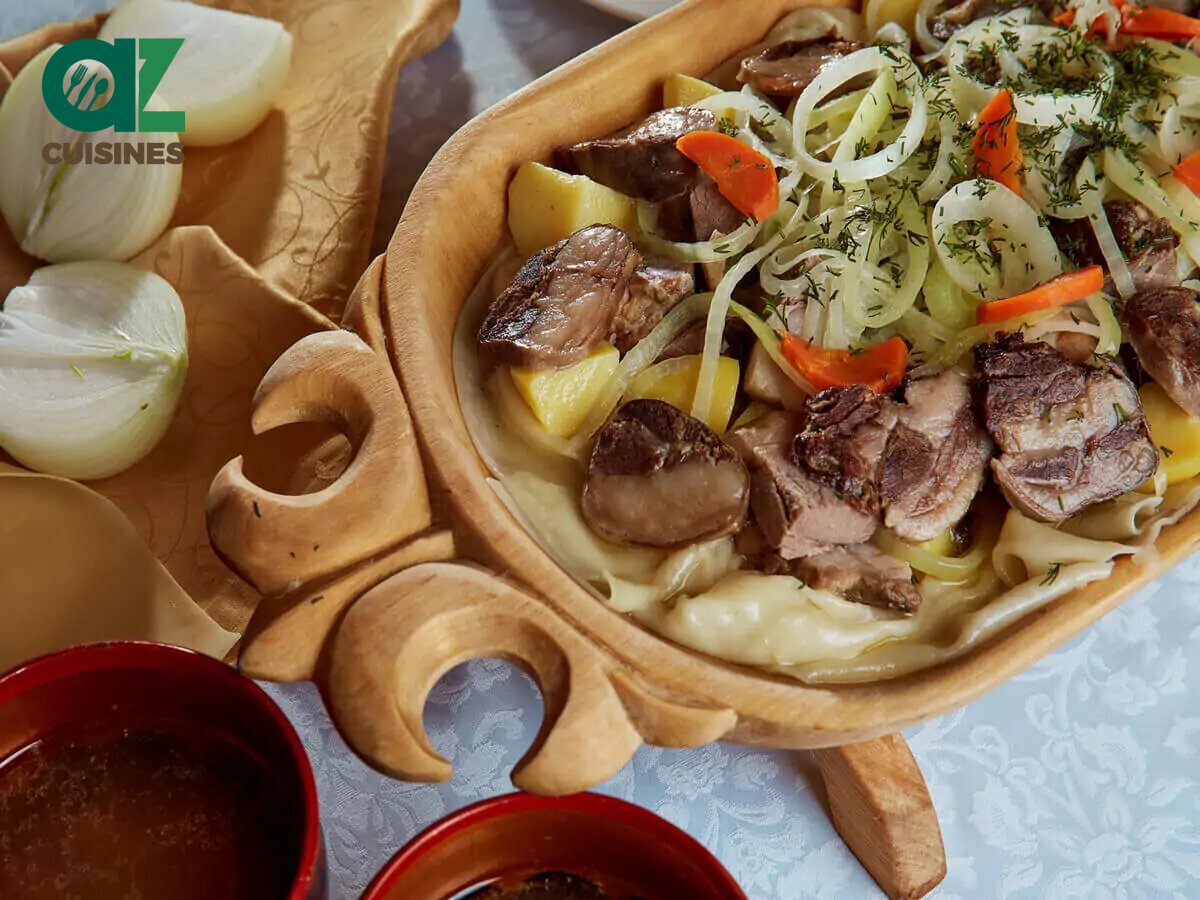
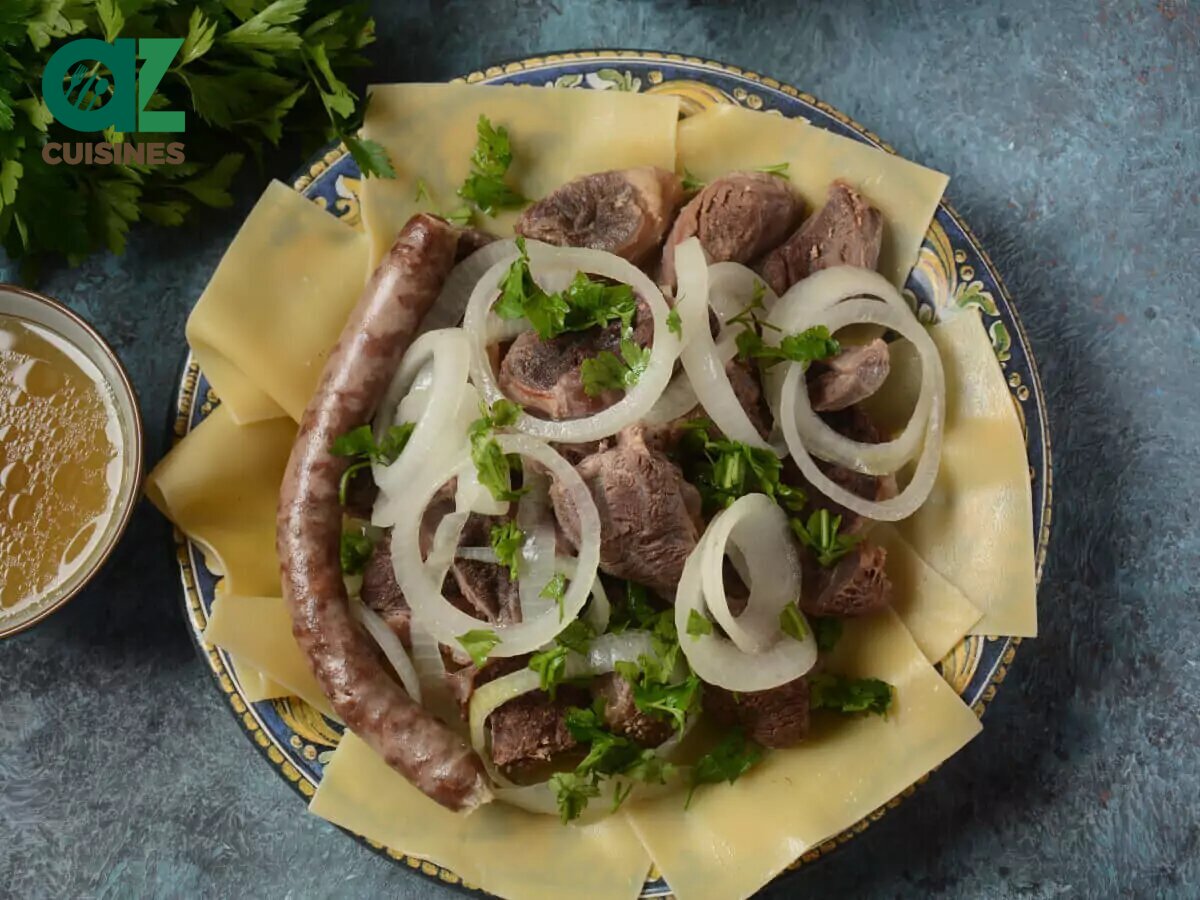
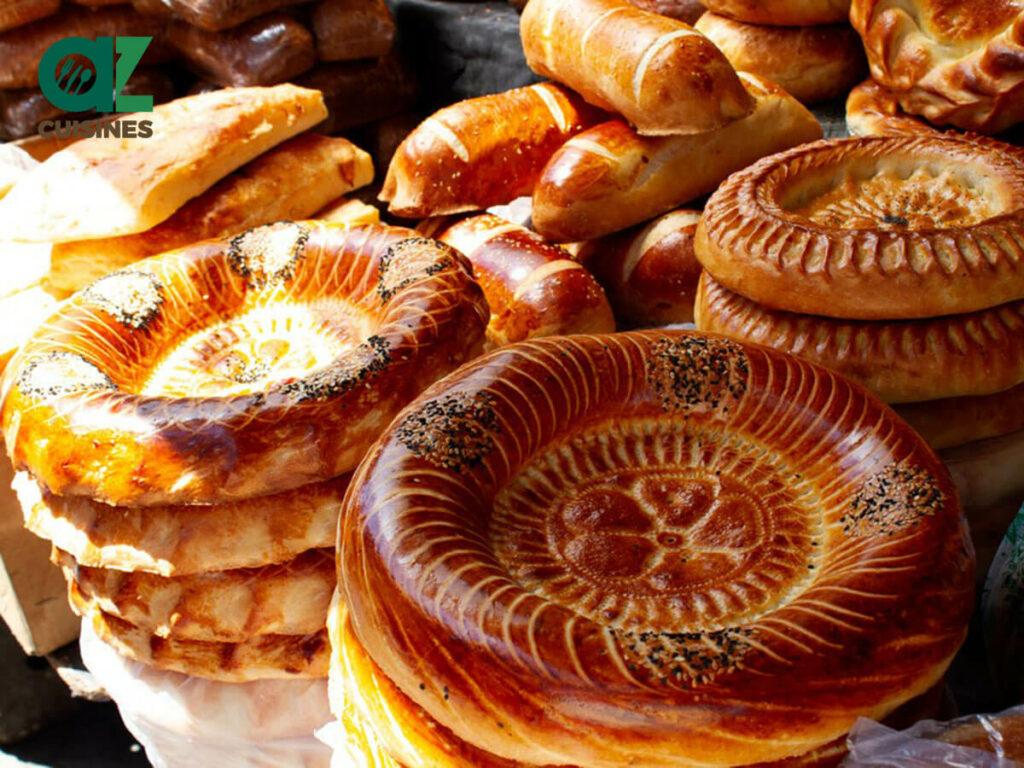
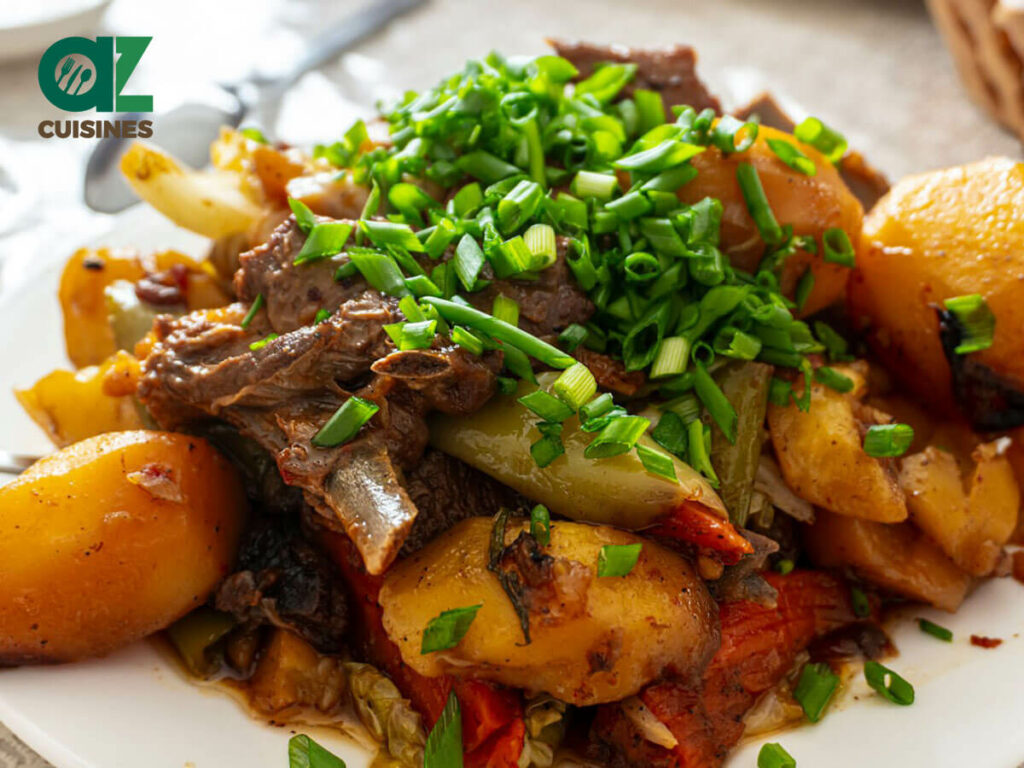
Adam Sam
Senior Food and Drink Editor
Expertise
Food Writer & Recipe Developer, Recipe Tester, Bartender, Cooking-video Maker, Editor In Chief
Education
Adam Sam, an experienced food writer and recipe developer, is passionate about blending diverse culinary traditions, national dishes, and innovative beverages, showcasing his proficiency in both traditional and modern recipe testing.
As the Editor-in-Chief, he elevates culinary content from street food to fine dining, focusing on Western cuisine and types of drinks at azcuisines.com, and is professional in creating engaging cooking videos that simplify complex dishes and ingredients.
His passion for food is evident in his writing, where he uniquely merges various cultures, traditions, and contemporary trends, skillfully combining classic recipes with modern cooking methods.